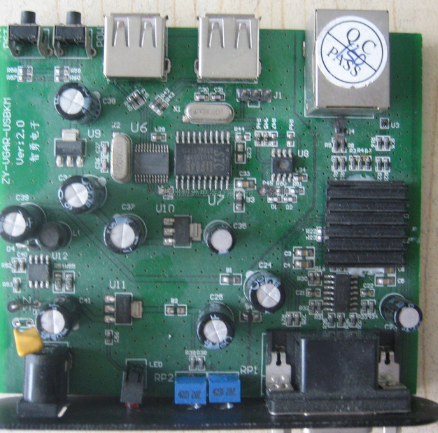There are many types of surface treatments for FPC soft boards. FPC manufacturers should choose according to the performance and requirements of the board. A simple analysis of the advantages and disadvantages of various surface treatments for FPC soft boards is for reference!
1. The advantages of OSP (Organic Protective Film) OSP: The process is simple and the surface is very flat, suitable for lead-free soldering and SMT. Easy to rework, convenient production and operation, suitable for horizontal line operation. The board is suitable for coexistence of multiple processing (for example: OSP+ENIG). Low cost and environmentally friendly.
OSP's weakness: the limit of the number of reflow soldering (the film will be destroyed after multiple soldering, basically there is no problem for 2 times). Not suitable for crimping technology, wire binding. Visual inspection and electrical measurement are not convenient. N2 gas protection is required for SMT. SMT rework is not suitable. High storage conditions are required.
2. Immersion silver: Immersion silver is a better surface treatment process. The advantages of Immersion Silver: simple process, suitable for lead-free soldering, SMT. The surface is very flat. Suitable for very fine lines. low cost.

Weaknesses of Immersion Silver: high storage conditions and easy contamination. Welding strength is prone to problems (microvoiding problems). It is prone to electromigration and Javanni bite corrosion to the copper under the solder mask. Electrical measurement is also a problem
3. Tin plating: Tin plating is a reaction of copper-tin replacement. Advantages of tinning: suitable for horizontal line production. Suitable for fine line processing, suitable for lead-free soldering, especially suitable for crimping technology. Very good flatness, suitable for SMT.
Weaknesses of tin plating: Good storage conditions are required, preferably no longer than 6 months, to control the growth of tin whiskers. Not suitable for contact switch design. The production process has relatively high requirements for the solder mask process, otherwise it will cause the solder mask to fall off. N2 gas protection is best when welding multiple times. Electrical testing is also a problem.
4. Immersion gold (ENIG) is a relatively large surface treatment process. Remember: the nickel layer is a nickel-phosphorus alloy layer. According to the phosphorus content, it is divided into high-phosphorus nickel and medium-phosphorus nickel. The application is different, so I will not introduce it here. The difference. Advantages of Immersion Gold: Suitable for lead-free soldering. The surface is very flat and suitable for SMT. Through holes can also be coated with nickel and gold. Long storage time, storage conditions are not harsh. Suitable for electrical testing. Suitable for switch contact design. Suitable for aluminum wire binding, suitable for thick plates, and strong resistance to environmental attacks.
5. Gold plating: Gold plating is divided into "hard gold" and "soft gold". Hard gold (such as gold-cobalt alloy) is commonly used on gold fingers (contact connection design), and soft gold is pure gold. Electroplating of nickel and gold is widely used on IC substrates (such as PBGA). It is mainly suitable for bonding gold and copper wires. However, the plating of the IC substrate is suitable. The bonded gold finger area needs to be electroplated with additional conductive wires. Advantages of gold plating: longer storage time> 12 months. Suitable for contact switch design and gold wire binding. Suitable for electrical testing.
Weaknesses of gold plating: higher cost, thicker gold. When electroplating gold fingers, additional design lines are required to conduct electricity. Because the thickness of gold is not constant, it may be too thick to cause embrittlement of the solder joint when applied to welding, which affects the strength. The uniformity of the plating surface. The electroplated nickel gold does not cover the edges of the wire. Not suitable for aluminum wire bonding.
6. Nickel-palladium-gold (ENEPIG): Nickel-palladium-gold is now gradually beginning to be used in the PCB field, and it has been used in semiconductors before. Suitable for bonding of gold and aluminum wires. Advantages of nickel-palladium-gold: applied on IC carrier boards, suitable for gold wire bonding and aluminum wire bonding. Suitable for lead-free soldering. Compared with ENIG, there is no nickel corrosion (black plate) problem; the cost is cheaper than ENIG and electro-nickel gold. Long storage time. Suitable for a variety of surface treatment processes and stored on the board.
Weakness of nickel-palladium-gold: complex process. Difficult to control. The application history in the PCB field is short.